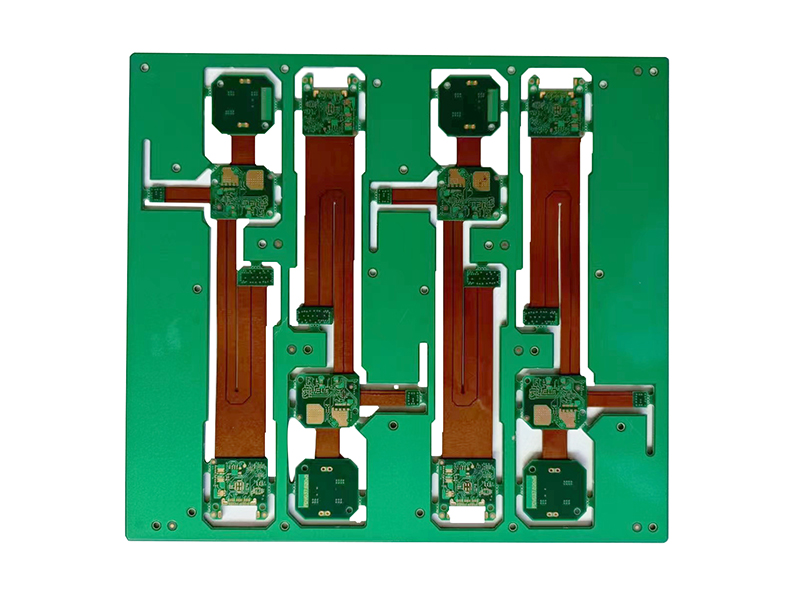HDI Rigid-Flex PCB Stackup
The rigid-flex PCB structure uses blind and buried holes, that is, HDI rigid-flex circuit. HDI rigid-flex circuit boards are typically driven by high-density BGA applications requiring vias in pads. This type of construction may also require an asymmetric construction if the blind vias need to be interconnected to the flex circuit layer.
2F+6R+2F HDIRigid-Flex PCB Stackup
This is a 10 layers rigid-flex board with HDI blind and buried via design. And HDI rigid -flex board adopts the first-order HDI+VOP process. After laser blind vias, need to be plated and filled, and the resin plugging process must meet the requirements of product design signal stability. Please see the first-order HDI rigid-flex board stackup.

This stackup is built for a 10-layer Rigid-Flex board, mainly for artificial intelligence products. This first-order HDI rigid-flex board stackup shows all layer thicknesses and drill hole locations. The FPC part has buried vias, and the rigid part has blind holes.
2R+2F+2R HDIRigid-Flex PCB Stackup
Rigid-flex board adopts HDI technology, its design flexibility, reliability and wiring efficiency are significantly improved. Please see the bellow2R+2F+2R HDI Rigid-Flex PCB Stackup.

This is a 2+ HDI rigid-flex circuit stackup, and its structure is 2R+2F+2R, that is combined with 2 Rigid layers, 2 flex layers and 2 rigid layers. And this HDI rigid-flex pcb has buried vias, blind vias.
The HDI rigid-flex pcb has a blind via from L1 to L2 and a buried via from L2 to L5. Finally, there is a blind via at the bottom from L6 to L5. This 6 layers HDI rigid-flex circuit is a symmetrical structure in which the flexible layer is located in the center of the material stackup.
2R+2F+2R Every layer interconnection (ELIC) HDI Rigid-flexPCB Stackup
As multilayer rigid-flex circuits with more layer counts and the circuit layers of rigid-flex boards are becoming thinner, new HDI technologies are used to increase interconnect density. Every layer interconnection (ELIC) is a higher HDI technology that allows PCB design engineers to Allows PCB design engineers to create ultra-thin, more flexible rigid-flex boards with high functional density. The advanced Every layer interconnection (ELIC) HDI rigid-flex boards contain multilayer copper-filled stacked microvias in pads to achieve more complex interconnects. Please see the bellow 2R+2F+2R Every layer interconnection (ELIC) HDI Rigid-flexPCB Stackup.

This 2R+2F+2R Every layer interconnection (ELIC) HDI Rigid-flex PCB stackup is applied in medical equipment requiring high-density interconnection. Stacking microvias saves space and increases density, providing greater internal connection flexibility, better routing capabilities, and lower parasitic capacitance. If you want to know more HDI Rigid-Flex PCB, please contact me freely.




